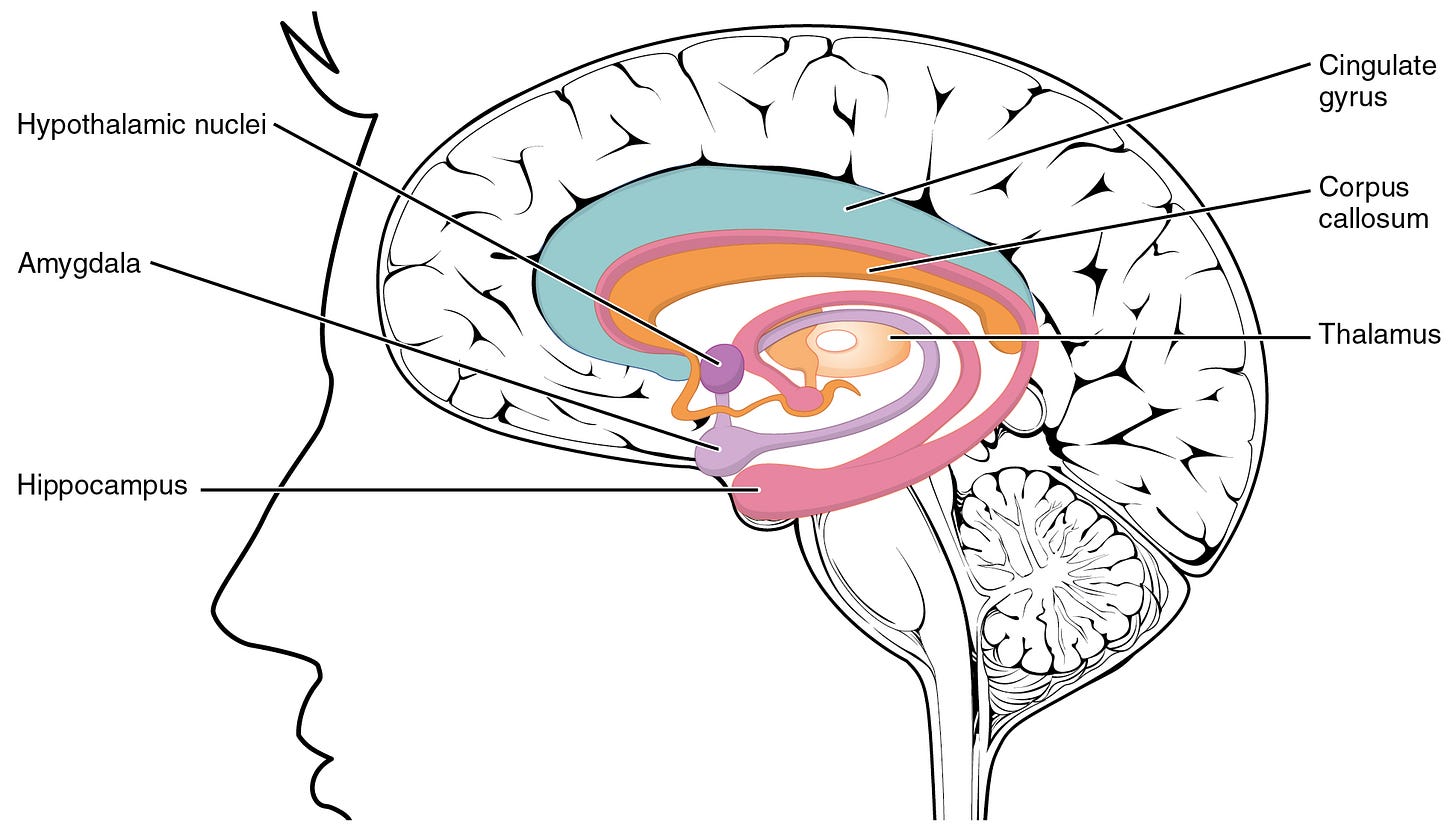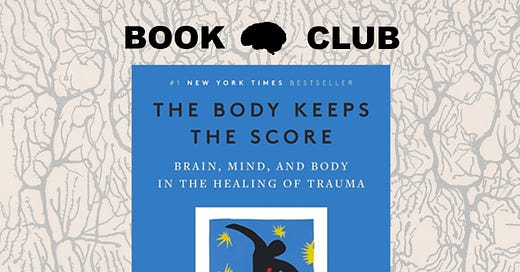“Trauma victims cannot recover until they become familiar with and befriend the sensations in their bodies. Being frightened means that you live in a body that is always on guard. Angry people live in angry bodies. The bodies of child-abuse victims are tense and defensive until they find a way to relax and feel safe. In order to change, people need to become aware of their sensations and the way that their bodies interact with the world around them. Physical self-awareness is the first step in releasing the tyranny of the past.”
- Bessel van der Kolk
Emotional trauma can be just as damaging and insidious as any physical ailment, but its subjective roots of the make it much harder to understand and address. Psychiatrist, researcher, and PTSD expert Bessel van der Kolk seeks to dispel this murkiness in The Body Keeps the Score.
Many of us think that trauma is has to be the result of some unusually scarring event, like a wartime experience or an instance of sexual abuse. While this kind of acute trauma is extremely painful, subtle factors like emotional neglect or social ostracism can also leave serious mental scars. Because of this, there are likely far more people suffering from trauma than you think.
From a neuroscience standpoint, trauma is rooted in the primitive limbic system that evolved to help our ancestors survive in dangerous conditions. In healthy individuals, the insula communicates with the amygdala to initiate a fight or flight response in stressful situations. In trauma victims, it does so constantly. The prefrontal cortex and other regions of higher order thinking are blocked, and an anxiety-ridden survival mode is almost always in place.

After a while, the brain needs to adjust to this high-stress condition. Functional scans revealed that PTSD victims display little activity in the brain regions that relay the emotions and sensations associated with terror, as if the brain had learned to shut itself down to avoid the psychological pain caused by trauma. Crucially, these inactive brain regions are also responsible for general emotion and “self-sensing,” or the ability to understand one’s own feelings and desires. Those who have numbed themselves to trauma lose their self-awareness, their emotional depth, and a part of their identity. When taken to an extreme, these victims can fully dissociate and lose their ability to recognize themselves entirely.
Though debilitating on its own, this loss of self-identity is just the tip of the iceberg. Emotional trauma manifests a range of other physiological and psychological symptoms that can make life extremely difficult for the victim. The trauma-induced numbness to sensation and perception can make it difficult to perform physical tasks and social interactions. Cortisol levels remain chronically high, creating a state of stress and anxiety that can make it difficult to sleep, focus, and regulate emotion. The thalamus, a brain region that filters out unnecessary incoming information, is often compromised in trauma victims which leads to sensory overload, panic attacks, and hyperfocus as a means of coping.
Part of the difficulty with treatment is that, though excruciating, living with trauma can be addicting. Chronic trauma can act as an analgesic, shutting down the brain so that the subject becomes numb to anxiety and physical pain. Still, van der Kolk proposes a few methods that can help in the healing process. His recommendations address trauma from all angles, including not just the rational brain but also the emotional brain and the physical body. He offers a breadth of techniques, including verbalization, specific physical movements, and certain forms of self-expression, all backed by science. Yoga, theater, and dance have all shown to be useful.
One of van der Kolk’s most highly recommended tools is a procedure called eye movement desensitization and reprocessing (EMDR). The process involves recalling a traumatic moment, which forces the patient to hold the event in their working memory. As they are thinking about the event, they are asked to track the movement of the therapist’s fingers as s/he moves them rapidly in front their eyes. Researchers have found that the traumatic memory generally loses much of its emotional charge, and can be processed more rationally than before EMDR was administered.
Van der Kolk delves into a variety of techniques (along with their scientific mechanisms) in the book, offering actionable protocols that can help those suffering from trauma. At almost 500 pages long, this book is absolutely packed with mind-opening information about the neuroscience of trauma. We’ve barely scratched the surface, so if we piqued your interest you can help support the newsletter by buying a copy of The Body Keeps the Score using the affiliate link below (at no extra cost).
🧠 👉 The Body Keeps the Score: Brain, Mind, and Body in the Healing of Trauma
Here’s the Table of Contents if you’re curious about what else the book has to offer:
Prologue : Facing trauma
Part I. The rediscovery of trauma. Lessons from Vietnam veterans ; Revolutions in understanding mind and brain ; Looking into the brain: the neuroscience revolution
Part II. This is your brain on trauma. Running for your life: the anatomy of survival ; Body-brain connections ; Losing your body, losing your self
Part III. The minds of children. Getting on the same wavelength: attachment and attunement ; Trapped in relationships: the cost of abuse and neglect ; What's love got to do with it? ; Developmental trauma: the hidden epidemic
Part IV. The imprint of trauma. Uncovering secrets: the problem of traumatic memory; The unbearable heaviness of remembering
Part V. Paths to recovery. Healing from trauma: owning your self ; Language: miracle and tyranny ; Letting go of the past: EMDR ; Learning to inhabit your body: yoga ; Putting the pieces together: self-leadership ; Filling in the holes: creating structures ; Applied neuroscience: rewiring the fear-driven mind with brain/computer interface technology ; Finding your voice: communal rhythms and theater
Epilogue : Choices to be made
If you missed them, you can check out last week’s Neural Newsletter and the previous Neural Book Club post.
Finally, let us know what book you’re curious about for next week! Thanks again for learning with us.




